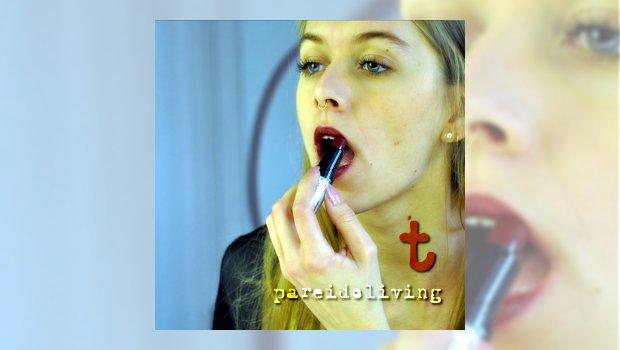Despite our best intentions, the pervading influences of contemporary trends, fashions and currents cannot help but seep unnoticed into our living and thinking. The commodification of music in particular has heightened both the speed as well as the brutality of these influences. Easy availability, immediate access, the sense of free entitlement or at best cheap ownership via streaming now shape an unfortunate but all too common set of expectations surrounding our listening habits.
I often speak of the ‘musical experience’ created by an artist or an album. When music is seen as an asset, insensitively pedalled across social media and piped into every piece of conceivable architecture as a continual stream of noise, then to my mind, this is exactly what we have lost. Music is irretrievably diminished. We hear, yes, but the prevailing attitude is not to listen; indeed, we come to believe hearing music is all there is to it. “Have you heard [insert band name here]‘s latest album?” And that’s that – all there is to it.
Sometimes it takes something special or remarkable to bring us back to what it’s all about. pareidoliving (or strictly speaking Chapter Ten: pareidoliving) is precisely that musical experience. I have long been an admirer of t’s work: if you ever need an experiential as well as an intellectual work out, a t album will provide it in unapologetic spades. Sure, you can casually slap it on and press play. But doing so means you bypass so much of what the artist has invested in its creation and miss many of the ‘easter eggs’, as t playfully teases.
If you don’t believe me, turn your back to the speakers after hitting play. The opening bars spring an enticing soundstage which lovingly creates the conditions under which you are invited to engage with the musical experience. The exceptional mix accentuates instrumental separation, placement and transparency. Deliberately so. From the get-go you are extended an irresistible invitation to be attentive to the music as well given the means by which you can appreciate it, savour it, taste it and relish it. No excuses: this is what music is really all about.
pareidoliving may well be t’s eighth studio album, but with it a new musical experience is evolving which makes this latest release the pinnacle of all he has achieved so far. Referring to it as “the fourth layer of a holograph” which started with fragmentropy (2015), there is an assured yet reluctant confidence, honed to almost poetic precision, from which emerges an almost perfect balance of structure working in tandem with form.
The clearest example of this is in the progression toward a more poetic lyricism which infuses the content with a spacious and imaginative visualism. Compare the lyric sheet with previous albums. It is an elegant development that allows t to shape a stronger organic cohesion at the heart of the music whilst also enabling it to become more direct precisely because the writing is allowed to change the shape of the music.
Opening track Same Old Everything is gorgeous in its haunting yet strangely comforting structure, an acoustic guitar framing a spacious vocal which is contemplative and thoughtful. How Not to Speak (track 3) has a beautiful elegance, built around the simple finesse of a slightly echoed piano weaving delicate subtleties that are entrancing and enticing. Across the album, the vocal performance is above all the triumphant beneficiary of this new blend of style and form and is without doubt his strongest to date.
These key ingredients in turn allow for a greater accentuation in the transitions and segues taking place within each song, allowing them to generate greater musical momentum. The Scars of the Sky is perhaps the most complete track in t’s entire catalogue. A throbbing pulse grounds the track, drums which carry the character (if not the beat) of jungle drum and bass, the use of noise to offset the music and create discordant passages which carry the ebb and flow through different changes of direction.
Take again, for example, The Light at the End of the Light. Not only do we have the use of provocative segues but also a more defined and refined addition of contrasts to dramatize and add spice to the music. They are brutally inventive and creatively effective in combining melody and harmony with a sweeping orchestral feel and darker atmosphere. Nowhere is this more powerfully exposed than in Tell the Neighbours We’re Fine where the music and the lyrics play with each other in ever increasing jarring contrasts: “While your mum tells the neighbours we’re fine aren’t we fine? We’re just fine.”
Simone Weil comments: “Attention is the rarest and purest form of generosity”. Yes, you can just slap this album on the player and enjoy what you hear without any recourse whatsoever to all these various layers. Yet even if our modern age no longer values music in the ways we would always wish, we can still be generous in the attention we pay to an artist and their music by taking the time to listen, to appreciate, to savour – and not just hear. This album certainly gives you much to savour and enjoy.
TRACK LISTING
01. The Same Old Everything (13:33)
02. The Light at the End of the Light (8:50)
03. How Not to Speak (2:20)
04. The Idiots Prayer (5:29)
05. The Scars of the Sky (10:01)
06. Behind this Pale Face (9:45)
07. A Relevant Lovesong (10:52)
08. Tell the Neighbours We’re Fine (10:29)
Total Time – 71:19
MUSICIANS
Thomas Thielen – All Instruments
ADDITIONAL INFO
Record Label: Giant Electric Pea
Format: CD, Digital
Country of Origin: Germany
Date of Release: 4th February 2022

